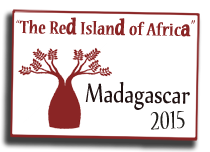Meet our Tractor
January 4-6
On Sunday evening, we landed at the TNR airport near the capital of Madagascar. While waiting for our passports to be stamped we observed strange people behavior around us. Some newcomers, mainly Arabs, held in his hand a large number of passports. When they presented them to border control officer it was always with a handshake that involved the cash exchange between their palms. They did not receive any receipt for it. Even later, in the passenger waiting areas we noticed similar situations, where uniformed officers received money from different people that suddenly appeared and disappeared.


Coen, a Dutchman living in Madagascar was waiting for us at the airport. We arranged our self-drive 4x4 rental with him. My plan was to jump in the car, drive right away 3-4 hours to the nearest National Park, and see lemurs. I did not want to waste the entirety of the following day just to drive such a short stretch of road. It was getting late and Coen was against this idea. He said that after dark, drunken soldiers replace Police checkpoints and meeting them on the way is not a pleasant experience. He insisted and we agreed to go to his place to spend a night there. This is a very corrupt countrysaid Coensoldiers on the road will always expect bribes.
Next morning Coen came to our bungalow. On his laptop, he showed us the weather forecast for next week. What are your plans? he asked. I briefly explained our intention to reach Morondava and the Tsingy National Park. Not this time Coen replied. There was tropical depression developing out of the coast near Morondava and heavy rain was expected. Road to Tsingy is not passable at this time due to high water level in the river. I was prepared to change plans again. It was the beginning of January, the peak of wet season in Madagascar and cyclone season in the Indian Ocean.


Coen explained the nuances of our rental vehicle. We got a map from him and early in the morning we were on route RN7 going south. Plan for the day was to get to Ranomafana, located 400 km from the capital. Initially weather was nice, but our progress was quite slow. The road here is the source of income for residents and it is crowded in every town or village. Any passing vehicle carries potential customers. Vendors want to be close to the road causing the traffic to be very slow on the narrow streets surrounded by primitive stalls. The road is also the only paved surface in the villages and is often used for drying rice or fruits in the clouds of exhaust of cars and trucks passing nearby.

Our car was 1989 Mitsubishi Pajero 4WD with a diesel engine. The vehicle was 26 years old, but when we looked around, we realized that it was not so old when compared to many other cars we passed. The very loud diesel motor earned him the nickname Tractor. Our new team member was very dusty inside. Fortunately, the front seats were comfortable enough to spend many hours on the road. Tractor had many surprises that it revealed to us on the way. At the very first gas station, while refueling we noticed a waterfall pouring down underneath. It turned out that the fuel tank was full of holes, and leaked badly when filled above a certain level. It was difficult to rely on the fuel gauge; it displayed full tank all the time. The speedometer was not working either. Leaking brakes required refilling the fluid every other day at minimum. When I forgot, brakes ceased to exist. Air conditioning was not present in the Pajero and the ordinary fan in the cabin unfortunately gave no signs of life. Under the African sun, you can imagine us sweating inside the cabin. With the windows closed, there was absolutely no air movement. Opening them all was the only solution to lower temperature inside. However, it did not give the desired effect as we drove slowly. This was common on the numerous ill-kept roads. The negative aspect of the open windows was an instant tan. To protect ourselves from sunburn we kept a small slit in the door at the top that allowed for a slight breeze. Unfortunately, even in this configuration, rays of the sun at its zenith almost immediately burned skin on my left arm and leg. Finally, our strategy was opening and closing windows depending on the position of the sun. What a game to simple gain that needed breeze in near desert conditions.


During rain, the heat from the sun was no longer a problem, but windows fogged quickly creating another challenge. As already mentioned, the cabin fan did not work and windows had to be closed when it rained. This combination instantly caused water condensation on all the windows inside and made occupied my wife while she wiped the windows to allow any visibility at all. Heavy downpour was another challenge for us because Pajeros wipers worked only at one slow speed. I learned to see through water drops on the windshield. This skill allowed me to drive forward, but slowly. If we combine all these problems together when driving Tractor in the rain at night: the moisture inside the cabin, the fogged-up windows, the slow wipers and very weak headlights, you can imagine how hard it is for a driver to see and drive around potholes, but simply even judge where the road really is.
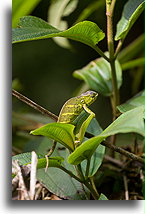

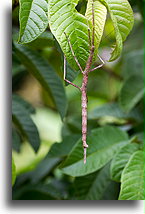

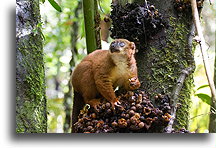
Two hours after sunset driving for last four hours in constant torrential rain, we finally reached the Setam Lodge near Ranomafana National Park. It was a long day for us, almost 12 hours on the road. It continued to rain all night, but when we woke up in the morning sun pierced above foggy hillside.

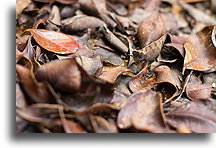

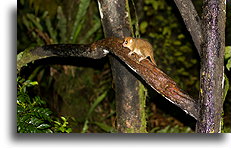
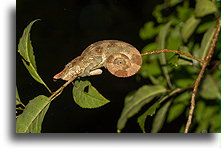
In Madagascar, you are not allowed to enter any of the national parks without licensed guide. Early in the morning, a young man, a resident of the nearby village was waiting for us outside the hotel. He was a member of the community that lived deep in the forest not so long ago. When national park was formed forest, people were forced to move to villages outside the park. Now, they try to make living on selling goods they produce, or sometimes they become guides in the forest they love. We have learned a lot about their life and customs from the stories local guide told us. During 5 hours of hiking during the day and an hour walk after sunset we were lucky enough to see three different lemur species, five different species of chameleons and many other interesting snakes, insects and plants.




